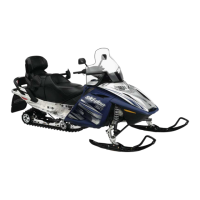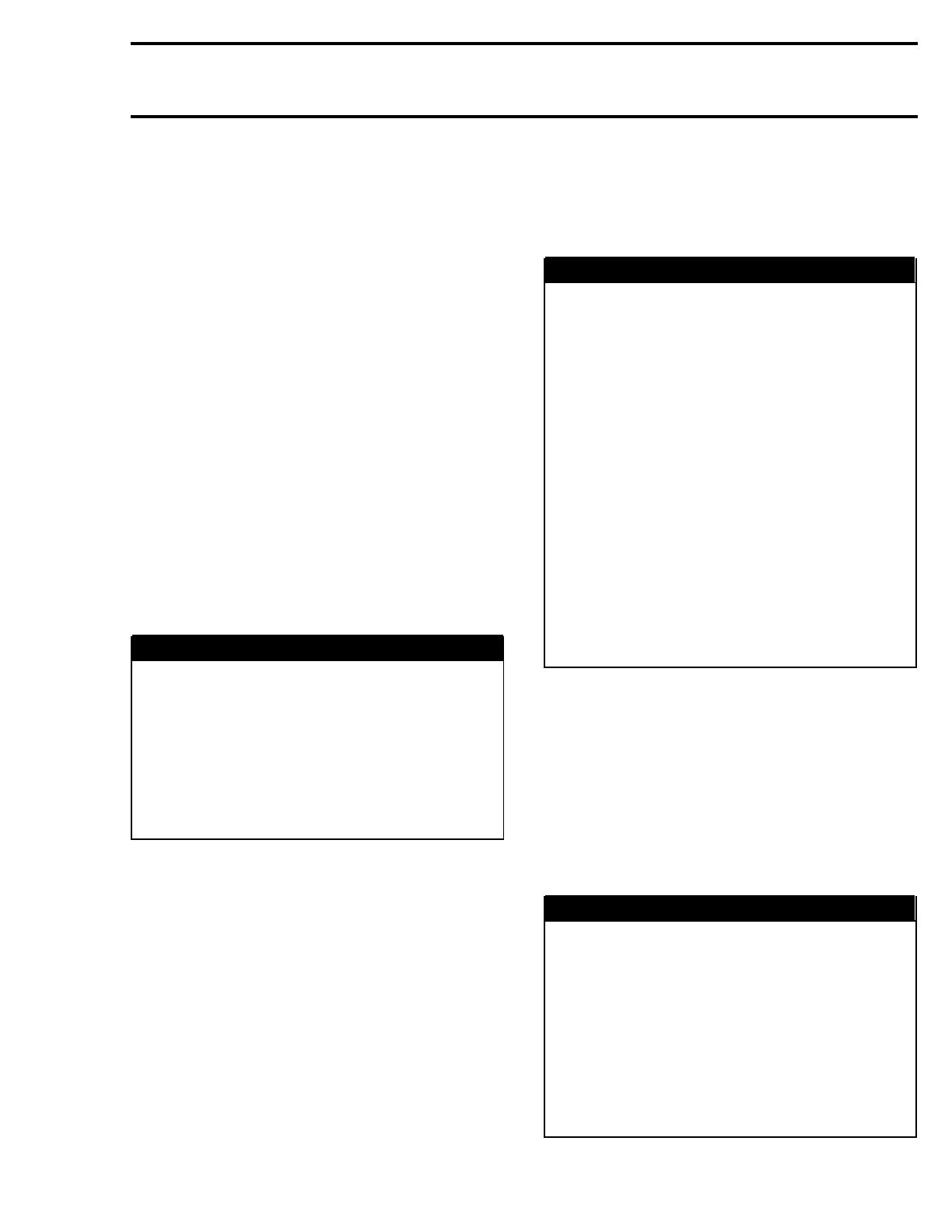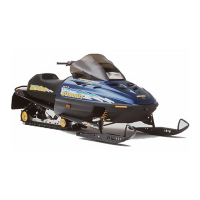Section052–TEC ENGINE MANAGEMENT
Subsection 02 (COMPONENT INSPECTION AND ADJUSTMENT)
COMPONENT INSPECTION AND
ADJUSTMENT
GENERAL
Engine problems are not necessarily related to the
electronic fuel injection system.
It is important to ensure that the mechanical in-
tegrity of the engine/propulsion system is present:
– good transmission system operation
– good engine compression and properly operat-
ing mechanical components, no leaks etc.
– fuel pump connection and fuel lines without
leaks.
Check the chart in TROUBLESHOOTING section
to have an overview of problems and suggested
solutions.
When replacing a component, always check its
operation after installation.
FUEL SYSTEM
WARNING
The fuel system of a fuel injection system
holds much more pressure than that of a car-
bureted snowmobile. Prior to disconnecting
a hose or to removing a component from
the fuel system, follow the recommenda-
tion described here. Pay attention that some
hoses may have more than one clamp at their
ends. Ensure to reinstall the same quantity
of clamps at assembly.
– Use the VCK (Vehicle Communication Kit)
(P/N 529 035 981) to release the fuel pressure
in the system. Look in the Activation section
of the software B.U.D.S. (version G 2.10, P
2.10 or higher).
WARNING
Fuel lines remain under pressure at all times.
Always proceed with care and use appro-
priate safety equipment when working on
pressurized fuel system. Wear safety glasses
and work in a well ventilated area. Do not
allow fuel to spill on hot engine parts and/or
on electrical connectors. Proceed with care
when removing/ installing high pressure test
equipment or disconnecting fuel line connec-
tions. Use the VCK to release fuel pressure
prior to removing a hose. Cover the fuel
line connection with an absorbent shop rag.
Slowly disconnect the fuel hose to minimize
spilling. Wipe off any fuel spillage in the
engine compartment. Fuel is flammable and
explosive under certain conditions. Always
work in a well ventilated area. Always dis-
connect battery or remove 30 A fuse prior to
working on the fuel system. After perform-
ing a pressure test, release the pressure.
– Always disconnect battery properly or remove
30 A fuse prior to working on the fuel system.
Refer to BATTERY section.
When the job is done, ensure that hoses from fuel
rail going to fuel pump are properly secured in their
supports. Then, pressurize the fuel system. Per-
form the fuel pressure test as explained in this
section.
Properly reconnect the battery or reinstall 30 A
fuse.
WARNING
Ensure to verify fuel line connections for
damage and that NO fuel line is disconnected
prior to installing the tether cord cap on
the DESS post. Always perform the high
pressure test if any component has been
removed. A pressure test must be done
before connecting the tether cord cap. The
fuel pump is started and pressure quickly
builds-up each time the tether cord cap is
installed and the START/RER button is de-
pressed (or rewind starter is pulled).
mmr2004-Rev 173

